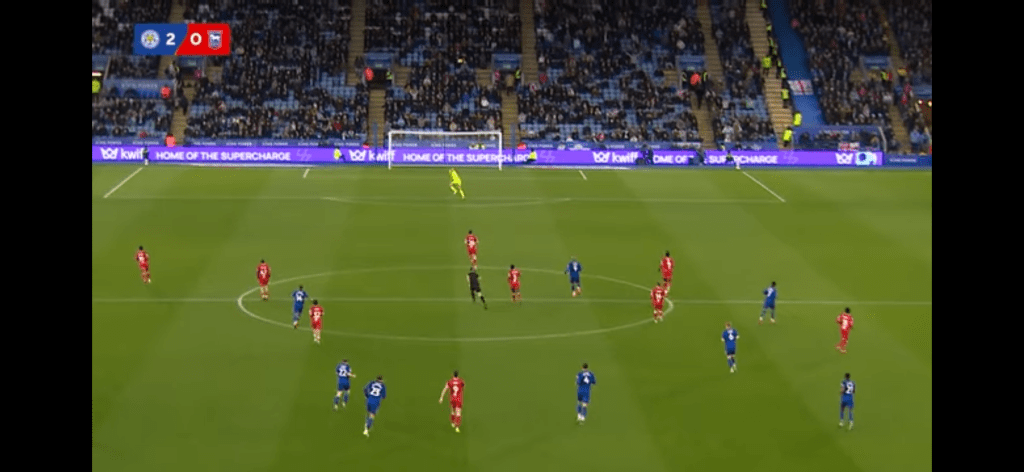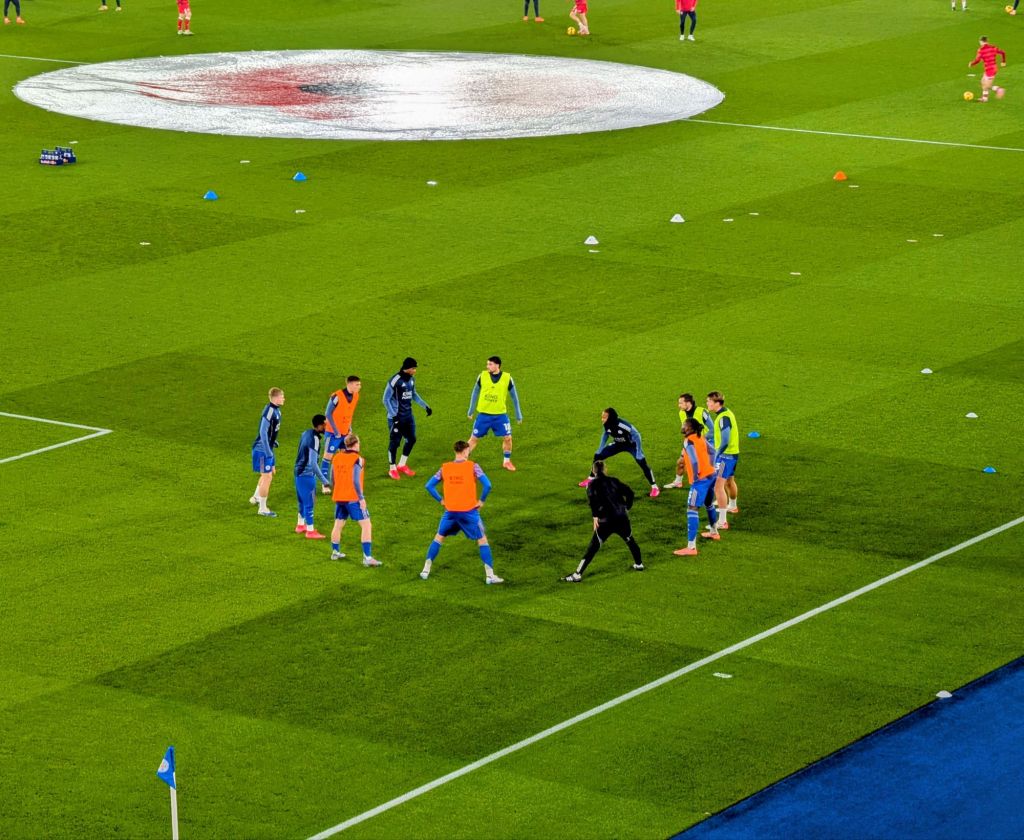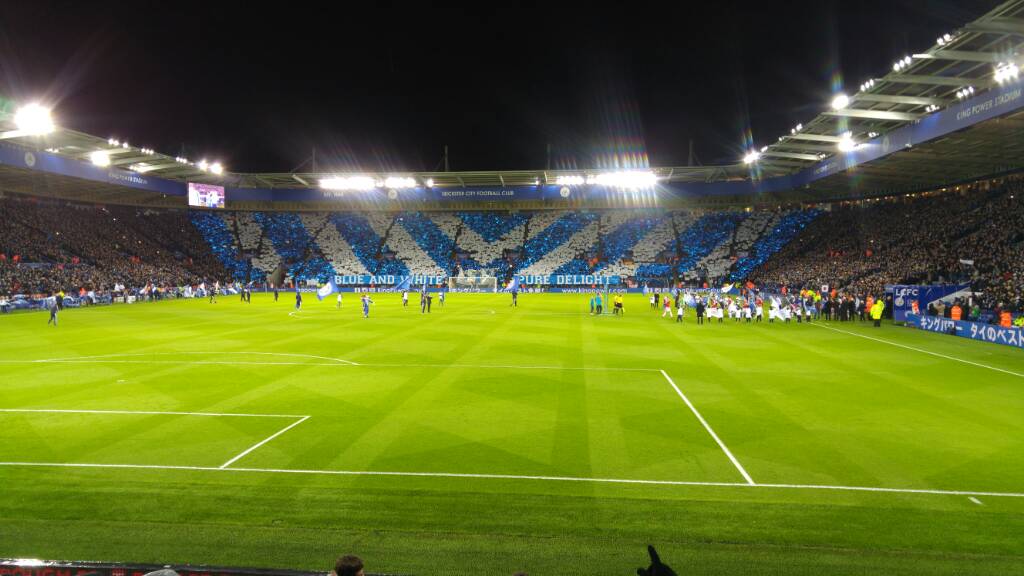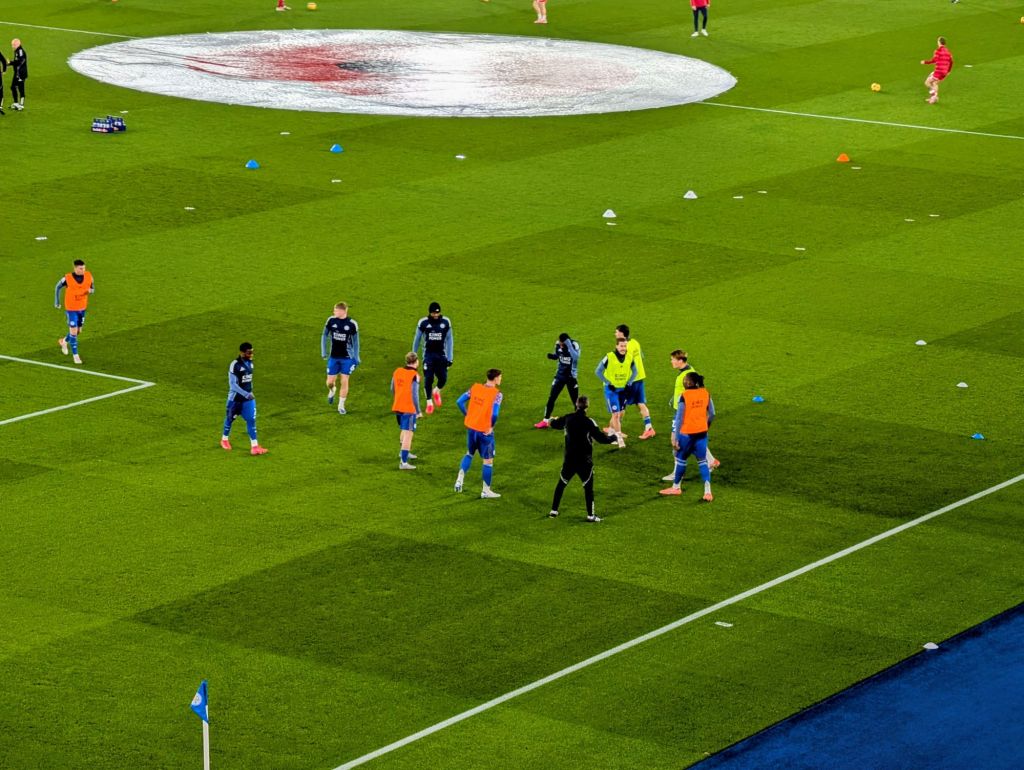Enzo Maresca’s appointment as Leicester City manager has sent a wave of optimism across the fanbase. While work is being done to solve the problems on the pitch, Harry Gregory is pleading for work to be done off it too.
My recent review of how Leicester City alienated many of its supporters across the last twelve months included a reference to another thought of mine. I pretentiously described it as the ‘de-Leicesterisation of the club’ which I am sure got many mouthing ‘yaw what?’
Let me attempt to convey the uneasy feeling I’ve had over the last eighteen months that has seeped into the malaise we’ve faced. Two years ago, we had just watched two seasons compacted into fourteen months from our television screens. The Premier League was multiple episodes of a soap opera. Home advantage disappeared as the stadiums sat still and empty.
There was a distinctive gap between football clubs and their fans. That gulf has never returned to what it was. Both sides have been like ex-lovers at a party. A respectful nod from different corners of the room.
In April 2021, Leicester City moved to Seagrave. Located not far from the often-flooded village of Sileby and accessible via the A46; one of the main routes from Leicester to Nottingham. The ambitious landscapes of the immaculate lawns and pathways were jaw-dropping. Leicester City had delivered something truly spectacular which had the ability to create a legacy and rather interestingly positioned where our pull for academy prospects reached into Nottinghamshire and Derbyshire.
As we fast forward to the present, the grand corridors of Seagrave and the plush facilities are commonly cited as a reason for the degradation in the squad’s morale and togetherness. On BBC Radio Leicester, Matt Piper recently let slip that the players were having to be asked to return the plates at the canteen as they had fallen into a pattern of leaving their used cutlery for training ground staff to pick up.
Seagrave hasn’t just become a symbolisation of how Leicester City lost its ‘band of brothers’ comradeship. It has also marked how Leicester City FC has slipped away from its host city, compounding the rather corporate approach at times to customers rather than fans.
Currently the majority of Leicester City’s squad only enters the city of Leicester for a home game. Previously they had to take a traffic-filled journey down Lutterworth Road or Aylestone Road. A normal, typical street of a city; all the traditional daily ongoings.
With Belvoir Drive’s location, new signings would often live in the Stoneygate area. Claudio Ranieri greeted costume-clad children on Halloween. Leonardo Ulloa and Esteban Cambiasso were found walking down Queens Road drinking their Argentine mate. Players would eat at restaurants and use their free time in the city. Community events requiring attendance wouldn’t be an issue. Ranieri took the squad out to Peter Pizzeria in the famous clean sheet story. That’s now a landmark in the city’s folklore.
Seagrave has seen players move to Nottingham, Lincolnshire, and Rutland. West Bridgford, home of our closest rivals, is where several players choose to live. Hilariously, poor Tete kept showing Instagram stories of the Trent from his apartment. If he’d turned his phone a little to the right, he’d have caught the City Ground. Plenty of City players have disappeared there on our last two visits, so no surprise his debut was the highpoint of his career.
To an extent, their choices are perfectly explainable. It’s an easier trip to training and maintains a life/work balance. Equally I don’t expect that if the players lived in the city, fans would be able to pass on tactical advice or badger them constantly. However, the players would understand the importance of a football club to its city. They would see the children in shirts. They would see the businesses which pinned up any LCFC material to their cars and windows of offices or shops. They would see that it’s now a city hurting from the end of a dream.
The lack of relationship does not stop at Seagrave. Leicester took a significant reputation kick during COVID due to hosiery factories still operating and a lockdown system that saw the city closed longer than most.
Can more be done to make use of the footfall occurring fortnightly to support the city’s economy? The giveaways of beer and doughnuts could be more charitable and, in the process, score all the social corporate responsibility points. Could pubs be included in the give-aways, increasing the chance of fans having a second pint? For every ticket bought on Boxing Day, translate the doughnut to buying a homeless person an evening dinner? Hand-out of scarves could be assistance for elderly people battling an energy bill crisis.
Arsenal had a superb campaign running alongside the return of fans to stadiums whereby their players featured in small videos advertising a local chip shop, a hairdresser, and a pub. In fact, the chip shop advert involved Aaron Ramsdale making fun of the noise made by Leicester fans when taking a goal kick. It supported the businesses while making the fans feel like the football club shared the interests of the community.
To condense it down, that’s really what the connection of a football club and its fans largely thrives on. You are all part of one big in-joke. In the aftermath of Leicester’s 4-0 victory over Nottingham Forest in October, the tweet simply said, ‘Leicester’s the place’. The engagement was significantly better than most from last season.
The tweet was a nod to a viral clip of a Bravo TV series filmed in 2003 and a scene where one Leicester weekend reveller exclaims ‘Forget Nottingham. Forget Derby. Forget Coventry. Leicester’s the Place’. It was a welcome change from the more standard path the social media accounts follow post-match. To the casual observer, it meant largely nothing but for Leicester City fans, it was our in-joke.
The owners in their time have made huge charitable donations to local charities and that for me was a sign that they did get Leicester. However, where I feel it falls is the tier below in the club’s hierarchy. Not only do they not get Leicester and its football club, but they don’t get football fans.
At times, our stadium feels as though it could be anywhere. There are no longer any stands named after club legends. References to anything pre-2010 are very scarce. There is a huge badge on the glazed façade and the name of the club is spelled in the seats. Yet it lacks a sense of location.
Half time t-shirt cannons, fan cams, honesty flags, food choices which make IKEA look Michelin star. It feels generic. It doesn’t feel tailor made to my club. It feels like it’s from a Harlem Globetrotters game. I understand that certain parts of the ‘experience’ aren’t aimed at me, but you must ask what motivates people to watch their local football team. It’s not trying to avoid a t-shirt flung towards your head while tucking into your half time pie at 2-0 down.
It comes back to that sense of origin and pride in your heritage. By and large, most Leicester fans are linked to it by blood and birth or locality. Therefore, your very foundation in communication with the fans must tap into that pride.
It’s easy for me to be critical here but there are solutions which connect into regionalism, history and belonging. Renaming the stands after legendary figures, a wraparound the top of the stadium which illustrates our honours, local breweries stocked in stadium bars, social media given more freedom to publish tweets such as they did post-Forest. Street food choices rather than unimaginative burger vans.
The club have cold blocked safe standing when the biggest clubs in the country are converting to them. Despite retro ranges selling out and an active fashion trend, the club have yet (until the forthcoming season) to make a nod to a former shirt. These are easy wins.
The flipside to this is when you visit a LCFC Women’s game. It feels very different. I accept there’s more room to grow when you have an empty stadium but the crowds watching those fixtures are something to be proud of. Equally, Ashleigh Plumptre’s comments about feeling a responsibility as a female footballer from Leicester to ensure Leicester City had a top flight women’s team were the most inspiring words said by a figure attached to the club in 2023. Some answers are already there.
Ultimately, winning football games unites football fans. Pride is a close second. It’s a go-to in defeat. The pride arises from a sense of belonging and connection to our own upbringings. It makes us unique as individuals – but at the same time brings us together. We are the ultimate in-joke.
Viewpoint
#block-d771bda0cdbd4bfef53f {
box-sizing: border-box;
height: 100%;
padding: 3% 3% 3% 3%;
border-radius: 0px 0px 0px 0px;
}
document.getElementById(‘newsnowlogo’).onclick=function(){ window.open(‘https://www.newsnow.co.uk/h/Sport/Football/Premier+League/Leicester+City’,’newsnow’); }; document.getElementById(‘newsnowlogo’).style.cursor=’pointer’; document.getElementById(‘newsnowlogo_a’).style.textDecoration=’none’; document.getElementById(‘newsnowlogo_a’).style.borderBottom=’0 none’;










David Bevan
David Bevan
David Bevan